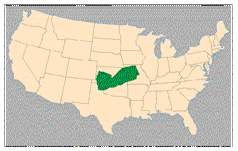Yemen - Introduction
Iran is the only country to recognize the Houthi government, Fighting between Houthi rebels and the Saudi coalition that backs Yemen's internationally recognized government had largely subsided by 2023. The Houthis control approximately one-third of Yemen's territory, including 70 to 80 percent of the population. The Houthis control the capital Sanaa and all of the former North Yemen except eastern Marib Governorate. Zaydis make up around 35 percent of Yemen's population. A Zaydi imamate ruled Yemen for 1,000 years, before being overthrown in 1962.
The MRCs are a system created by the UN-backed government after the fall of the Saleh government in 2012, a slight adjustment of the Saleh-era Military Districts. By the end of 2016, the Houthis had attained complete control of all the MRC headquarters and retained their basic structure as an organizing principle for the military.
Yemen is a strategically important country in the Arabian Peninsula, overlooking the Mandab Strait, and has great economic potential with its large labor force, long shoreline, and agricultural and hydrocarbon resources. Yet, the country is one of the poorest and most fragile countries in the world. Poverty, malnutrition, and unemployment are widespread, and water resources are very scarce. The poor social indicators add to social tensions, complicate the management of the economy and contribute to security challenges. Furthermore, high dependence on hydrocarbon resources exposes the economy to external shocks.
Yemen, in contrast to the Gulf states, is a nation characterized by intense poverty and severe structural limits to sustainable economic growth. It is a fragile state in which the central government exercises limited control over territory, particularly in the northern tribal regions. Yemen’s modern history is rife with internal conflict.
The country continues to suffer from internal strife, decentralized political legitimacy, underdevelopment and corruption. A tribal rebellion in the north near the Saudi border percolated along as a vestige of the historic Imamate. In the south, latent tensions connected to unity and the civil war festered as southerners protest political and economic marginalization. With the onset of armed conflict in March 2015, real activity collapsed, the country’s human and real capital suffered, large external and internal imbalances emerged, and the fiscal deficit surged.
|
|
| Land Comparison
| |
| Land
Area 527,970 sq km (203,797 sq mi) Coastline Religion Nationality Type of Government Time |
Population 16,387,963 (July 1998 est.) 23 million (2008 est.), Growth rate: 3.31% (July 1998 est.) Literacy Major Cities and
Population International Airports Language |
| Economy Currency Denomination: Yemeni Riyal (YR): $1 = 124.09 YR (1998) GDP $31.8 billion (1997 est.) GDP (official exchange rate): $26.91 billion (2008 est.) GDP (purchasing power parity): $55.41 billion (2008 est.) Budget: revenues: $9.243 billion expenditures: $10.36 billion (2008 est.) GDP Per capita: $2,300 (1997 est.) US$ 600 (Nominal - 2006 estimate), US$ 2,300 (PPP - 2007 estimate) Real growth: 5.0% (1997 est.) Exports: $2.3 billion (f.o.b., 1997 est.) Commodities: Crude oil, cotton, coffee, vegetables, dried and salted fish. Imports: $2.3 billion (f.o.b., 1997 est.) Commodities: Textiles, manufactured consumer goods, petroleum products, sugar, grain, fruits, foodstuffs, cement, machinery, and chemicals Unemployment: 30% (1995) Agriculture: Accounts for about 15% of GDP and over half of the labor force. Products include grain, vegetables, fruits, qat, coffee, cotton, dairy products, poultry, meat, fish. |
|
|
NEWSLETTER
|
| Join the GlobalSecurity.org mailing list |
|
|
|


